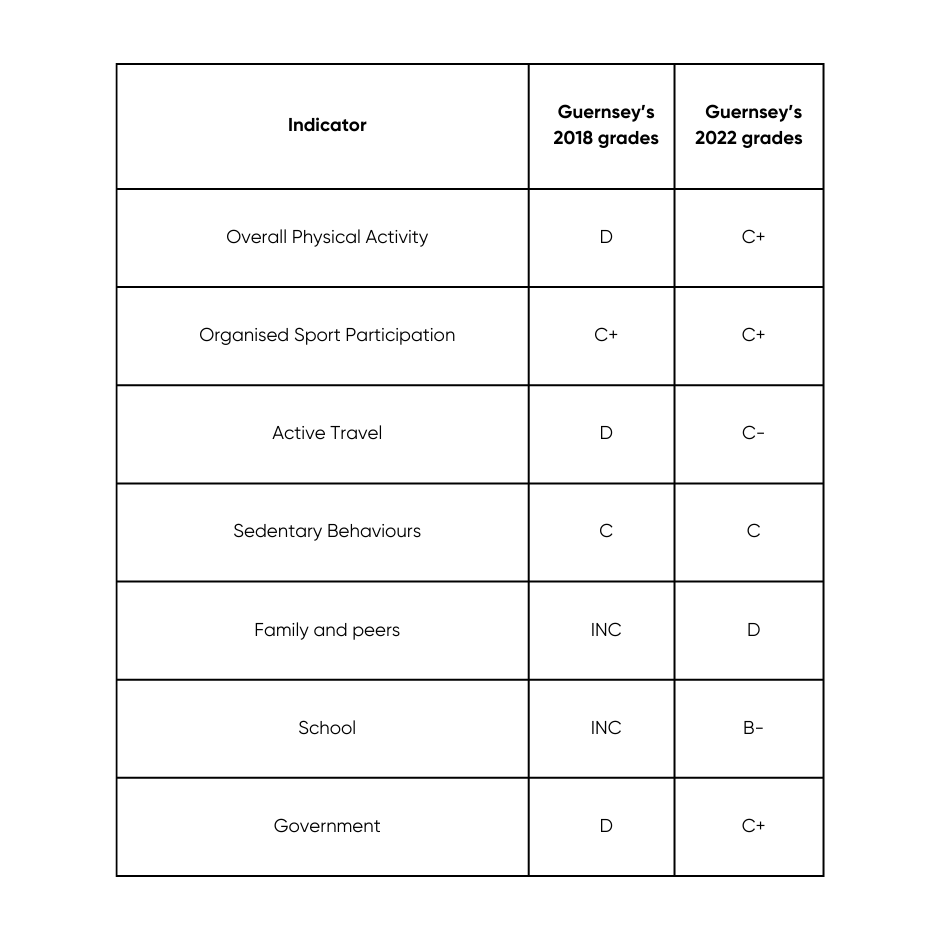Guernsey’s children are ‘moving in the right direction’

A multi-sectoral working panel assembled by the Health Improvement Commission for Guernsey and Alderney LBG has released its second 'Active Healthy Kids Report Card' which reports on the levels of physical activity within the Bailiwick's children and young people. Titled, ‘Moving in the Right Direction’, the report shows an increase in activity levels as well as highlights the continued need for supporting local children to be more active.
Led by the Health Improvement Commission, the Report Card contributes to the Active Healthy Kids Global Alliance which comprises 57 countries who have committed to producing Physical Activity Report Cards to form the 2022 Global Matrix.
The report has been produced by a multi-sectoral working group of ten people with diverse expertise in the activity levels of young people in Guernsey, including Education, Public Health, Health Improvement, Sports and Leisure sectors and Research Policy & Strategy. This group collated local evidence against seven indicators of children’s physical activity, which was then graded A to F, and inconclusive for indicators where there was insufficient data. This grading system was used by all countries involved. The grades were independently verified and audited by experts from the Active Healthy Kids Global Alliance.
The indicator for Overall Physical Activity received a C+ grade, an improvement on the 2018 grade of D. The Active Travel indicator increased from a D to and C-, based on data showing that more children and young people are walking, cycling or scooting to and from school.

“It is pleasing to see these improvements in the grades of indicators for physical activity. The increase in active travel is especially welcome as we hope that it reflects a shift in understanding the benefits of active travel, not just for young people but for the whole community.
The improvement in the Government grade is especially promising as it demonstrates increasing recognition of the importance of physical activity in enabling improved health, social, economic and community outcomes. Government leadership is critical to building physical activity opportunities into a range of policy and strategy.
These results show that the collective efforts from the community in promoting and enabling children and young people’s physical activity so far are beginning to pay off. In some areas, however, the grades show that a significant number of our children and young people are not moving enough nor often enough to reap the mental, physical and social benefits of regular physical activity. Like elsewhere, our children become less active as they get older”
A limitation of the Report is that most available data reflect pre-pandemic surveillance. Locally, COVID-19 and its associated lockdowns impacted on children and young people’s opportunities to be active across many settings including in school and sports/active clubs, being active with family and informal activity with friends.
The first post-pandemic Children and Young People’s Survey is expected to be published later this year and the results will provide an indication of the pandemic’s impact on physical activity levels.
The work of the Be Active team at the Health Improvement Commission aims to support more people to be more active, more often. Further details can be found here: https://healthimprovement.gg/services/be-active